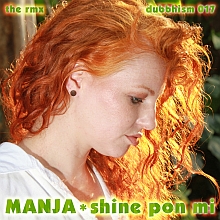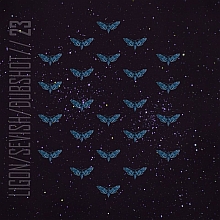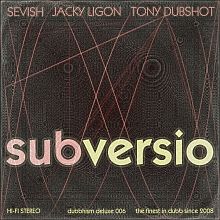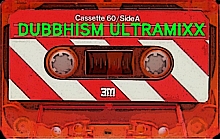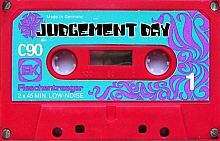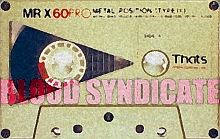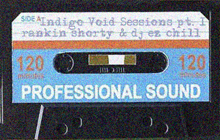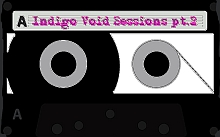
Why would anybody want to make microtonal music with a modular synth? Somehow, using a computer seems more logical. Especially if you want perfection, which is a common syndrome among microtonalists. But if you’re ok with an oscillator drift of about +/- 1 cent, making microtonal music on a modular system can be big fun.
This is the first of 3 blogs we’ll do about using a modular synth for microtonal, or xenharmonic music as we like to call it. In the last part of the series we’ll (hopefully) review two eurorack quantizers with xenharmonic capabilities: the µTune by Tubbutec which is currently being developed, and the Ornament & Crime, which is an open source/diy project. Right now, these two quantizers are quite unique in the eurorack realm: they both offer gated quantizing of xenharmonic tunings and scales with a precision of around 0.2 cent.
VCOs and tuning precision
While we’re waiting impatiently for the µTune module to arrive, this is perhaps the right moment to point out that making xenharmonic music on a modular synth isn’t just about having access to the right quantizer, or to the right 1v/oct control voltage for that matter. First of all, you need to get precise with your VCOs. There are different approaches to VCO design and some of them influence tuning precision negatively. Potential problems include oscillator drift, inaccurate 1v/oct tracking over a wide range, and the (lack of) tactile quality and precision in coarse and especially fine tune knobs.
Here are some general tips for VCO accuracy:
- Use only the most stable oscillators. Not a Plan C VCO that needs to be calibrated badly;
- Make sure VCOs are not connected to the eurorack CV bus, if necessary remove jumpers;
- Let the VCOs warm up for at least 30 minutes;
- Get the most accurate frequency meter available, preferably with a resolution of 0.1 cent;
- A drift of +/- 1 cent is normal/acceptable, more drift is definitely possible;
- Get really, really tactile with your fine tune knobs.
Now, what sound do you want to get from your VCO? Sound as in timbre, harmonics, overtones or whatever you want to call it. Did you know that xenharmonic tunings often sound best when the tuning you’re using is matched with a related timbre? (Read the theory here or a simple version here.)
Yes, that's right! There is an intimate relationship between tunings, scales and timbres. Intuitively, you already know this. For example, when you hear a popular melody, like some Beatles tune, being played by church bells, it’s relatively difficult to hear what the harmonies are. That’s because the church bell-timbre doesn’t like to be played in the standard 12-TET tuning. And in the same way, so-called ‘quarter tone music’ played using a regular piano timbre can sound challengingly dissonant. Put simply, if you're not aware of the crucial connection between tunings and timbres, your microtonal experryments may end up sounding like crap!
Using a modular synth, the easiest way to get control over the amount of tuning-related dissonance in a timbre – or in other words: the easiest way to create tailor-made timbres for a specific tuning - is probably using linear FM (it doesn’t have to be thru-zero). You can also try additive synthesis, but you'll probably need more oscillators.

click to enlarge
Here’s a quick trick, using linear FM, to create a perfect timbre for a tuning that's based on an equal division of the octave. For example, let's say you use 7 EDO (or 7-TET) and the root note of the carrier VCO is a C3, which is 130.813 Hz (unless of course you believe that the Nazi Reich Minister of Propaganda Joseph Goebbels wants to poison our chakras with an evil tuning). Now you multiply this frequency by 7 and you get 915.691 Hz. This will be the frequency of the modulator VCO. This trick also works for 5 EDO, 9 EDO and so on, but of course you would have to multiply by 5 or 9 or whatever.
At the 1v/oct input, both the carrier and the modulator VCO should receive the same cv-signal; also tuned to the same EDO. This could be a melody or bass line for example, probably a signal coming from a buffered multiple. If you are fortunate enough to have octave switches on your oscillators, you can now go through various timbres using the octave switches. All of the timbral variation you get from switching around is more or less aligned to 7 EDO (also depending on the quality of the 1v/oct tracking of your VCO). Don’t drive the FM amount too hard as this may affect the frequency. And there it is: an FM timbre custom made for 7 EDO. Here’s how that might sound.
Below are some more examples for 5 EDO, 8 EDO, 9 EDO and 13 EDO. Note that for the cases of 8 EDO and 16 EDO nothing spectacular will happen to the timbre, as multiplying by 8 or 16 is the same thing as going up a bunch of octaves. Also, if you end up with modulator frequencies above 1500 Hz, and you don't have an octave switch for the modulator VCO, you'll probably want to divide the modulator frequency by 2 or 4 to keep it in the 200Hz ~ 800 Hz range. This way you'll avoid that only your dog can hear the FM effect clearly.
In case you're wondering: these demos also have some other fx like waveshaping, flange and reverb. And a few perfectly tuned sounds were even mixed with other, more dissonant sounds, just to show that you can play with it.
Tips and tricks for matching a tuning with an FM timbre:
- For creative timbral options and ease of use, use oscillators with octave switches;
- Just in case, you could use something like the A-185-2 Precision Adder;
- Something like the N+1 output of the A-149-1 can be used for timbre modulation
The classic attenuate-trick
The sound examples above were made without a xenharmonic quantizer. Instead, a classic trick was used: attenuating the control voltage coming from a ‘regular’ quantizer. Here’s how you do it, but keep in mind that using a 2hp micro-attenuator with flimsy micro knobs is not going to work this time. You’ll need good quality knobs.
Example 1: tuning to 7 EDO. Set a quantizer like the Intellijel µScale to a whole note-scale (C D E F# G# A#) and attenuate the outgoing cv-signal in such a way that a Major ninth interval (like for example C3-D4) will sound exactly like an octave. In other words: the difference between an attenuated C3 and D4 would be exactly 1.000v. Tadaa… this produces 7-EDO voltages for your VCO. On the quantizer, you can now disable certain steps to create simpler scales, or you can add extra notes (that are actually a part of 14 EDO). Of course, changing settings on the quantizer will not produce uniform scales over the full range. That's why this trick has limited use.
Example 2: tuning to 13 EDO. Set a quantizer to a chromatic scale and attenuate the outgoing cv-signal in such a way that a Minor ninth interval (like for example C3-C#4) sounds exactly like an octave. This produces 13-EDO. Again, you can disable certain steps on the quantizer to create simpler, but also messier scales. And so on…
The most important difference between the two examples is the way you set up the quantizer. For EDOs with less than 12 steps use the 1st method. For EDOs with more than 12 steps use the 2nd method.
In part 2 you'll learn some more xenharmonic tricks, and a custom tuning pack for the Ornament & Crime module, containing 50 xenharmonic tunings will be made available.




